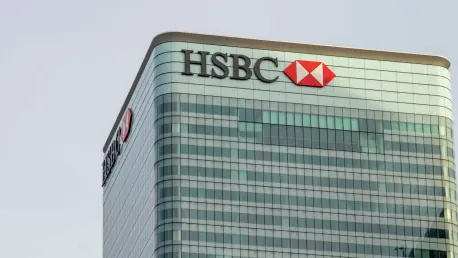HSBC Holdings PLC, a global banking and financial services organization, is undergoing a significant transformation. The bank is streamlining its retail banking operations outside its core markets, focusing on wealthier clients, and cutting down on costs. This strategic shift is expected to have far-reaching implications for its global banking operations. As HSBC seeks to optimize its financial services, the bank’s overarching goal is to enhance profitability and strengthen its presence where it holds significant leverage.
HSBC’s Strategic Shift: An Overview
HSBC’s decision to streamline its retail banking operations in Mexico is part of a broader review of its global operations. By reducing its consumer presence outside its principal markets, namely the U.K. and Hong Kong, HSBC is pivoting towards wealthier clients. This strategic move aims to consolidate the bank’s services in key areas, ultimately enhancing its profitability. When HSBC entered the Mexican market through its acquisition of Grupo Financiero Bital in 2002, it marked a significant expansion. However, facing regulatory challenges, particularly a substantial penalty from U.S. authorities in 2012 due to anti-money laundering deficiencies, the bank has been prompted to reconsider its position. Rather than a complete withdrawal, HSBC plans to significantly curtail its retail banking operations in Mexico.
The competitive pressures in Mexico have played a significant role in HSBC’s strategic reconsideration. Banco Bilbao Vizcaya Argentaria, S.A. (BBVA) and Citigroup Inc.’s C Banamex are more successful rivals that have maintained a stronger market position. As a result, HSBC’s relative scale and influence in the retail segment have been diminished. Consequently, HSBC aims to target premier clients with substantial financial portfolios, shifting away from the mass-market customer base that has proved less profitable. This focus on wealthier clients is envisioned to improve HSBC’s competitive edge by leveraging its resources and expertise to provide more targeted and valuable services.
Competitive Pressures and Market Challenges
HSBC’s challenges in Mexico are mirrored in other regions such as Malaysia and Indonesia, where it faces similar competitive pressures. The bank’s senior executives have recognized that a concentrated focus on premier banking clients would yield higher benefits compared to catering to the broader mass-market customers. As HSBC reviews its operations in these regions, the strategic pivot towards affluent clients is aimed at maximizing profitability and aligning with industry trends. The move to target wealthier clients is not solely about trimming retail operations but is a broader effort to consolidate resources and enhance service quality apart from achieving better financial returns.
Moreover, regulatory landscapes in various markets have contributed to HSBC’s decision to streamline operations. Tackling regulatory challenges efficiently and narrowing its focus allows the bank to adopt a more resilient and focused strategy. By limiting its exposure in less profitable segments and redirecting efforts towards core markets, HSBC hopes to not only stabilize but also amplify its financial performance. This realignment is seen as crucial for HSBC to maintain its competitive positioning amidst dynamic market conditions and regulatory environments globally.
Leadership and Cost-Cutting Initiatives
Georges Elhedery, HSBC’s CEO since September, has been instrumental in driving the bank’s focus towards premier clients and wealth management. Under his leadership, initiatives to streamline operations and enhance cost-efficiency have gained momentum. Aligning with the bank’s overarching goal, Elhedery aims to optimize financial services towards the affluent demographic, ensuring resource optimization and elevated service standards. Elhedery’s commitment to cost reduction is evident through HSBC’s ongoing efforts to achieve up to $500 million in annual savings from previously announced job cuts. This cost-saving initiative is part of a broader restructuring plan aimed at aligning the bank’s operations with its strategic priorities, focusing on profitability and client service enhancement.
The strategic focus introduced by Elhedery also includes consolidating overlapping senior roles within the Commercial Banking and Global Banking and Markets segments. This organizational restructuring is designed to streamline processes, reduce redundancy, and enhance operational efficiency. By consolidating roles and reducing overhead costs, HSBC positions itself to serve its targeted client base better, offering specialized and valuable services to premier clients. Moreover, these structural changes are intended to bolster the bank’s capability to adapt to market dynamics and regulatory requirements efficiently, ensuring sustained growth and stability.
Industry-Wide Trends and Strategic Moves
HSBC’s strategic shift is not an isolated move but rather part of a broader industry trend towards specialization and targeted services. Citigroup has recently completed the separation of its institutional banking business in Mexico from its consumer, small, and middle-market segments. This strategic split signifies an industry-wide shift towards specialization, echoing HSBC’s focus on premier clients and targeted services. Similarly, BBVA announced a reorganization of its global Client Solutions area earlier this year to enhance customer experience, emphasizing a broader industry shift towards optimizing client services. These moves underscore the industry’s recognition of the importance of specialized services to improve competitive positioning and customer satisfaction.
HSBC’s maneuvers align with these industry trends, aiming to refine market approaches and enhance client experiences. By focusing on premier clients, HSBC expects to deliver high-quality, personalized services that cater to customers’ distinct needs. This approach not only serves to improve profitability but also strengthens client relationships, ensuring long-term loyalty and engagement. The strategy of honing in on higher-value segments is designed to elevate HSBC’s market standing and drive sustainable growth amidst evolving market conditions.
Organizational Restructuring and Global Focus
HSBC Holdings PLC, one of the world’s largest banking and financial services organizations, is currently undergoing a substantial transformation. The bank is restructuring its operations to focus on its core strengths, especially its retail banking outside its primary markets. HSBC is honing in on affluent clients and vigorously working to reduce expenses. This strategic overhaul is anticipated to have widespread effects on HSBC’s global banking operations. By optimizing its financial offerings, the bank’s primary objective is to elevate profitability and consolidate its influence in regions where it already has significant leverage. HSBC’s realignment includes divesting from less profitable sectors and investing more in areas with high potential for growth. The bank’s management believes that by focusing on well-off customers and critical markets, they can achieve a more sustainable financial performance. As part of this push, HSBC is also likely to increase its digital banking efforts, aiming to provide superior products and services to its target clientele while maintaining a competitive edge in the global market.









